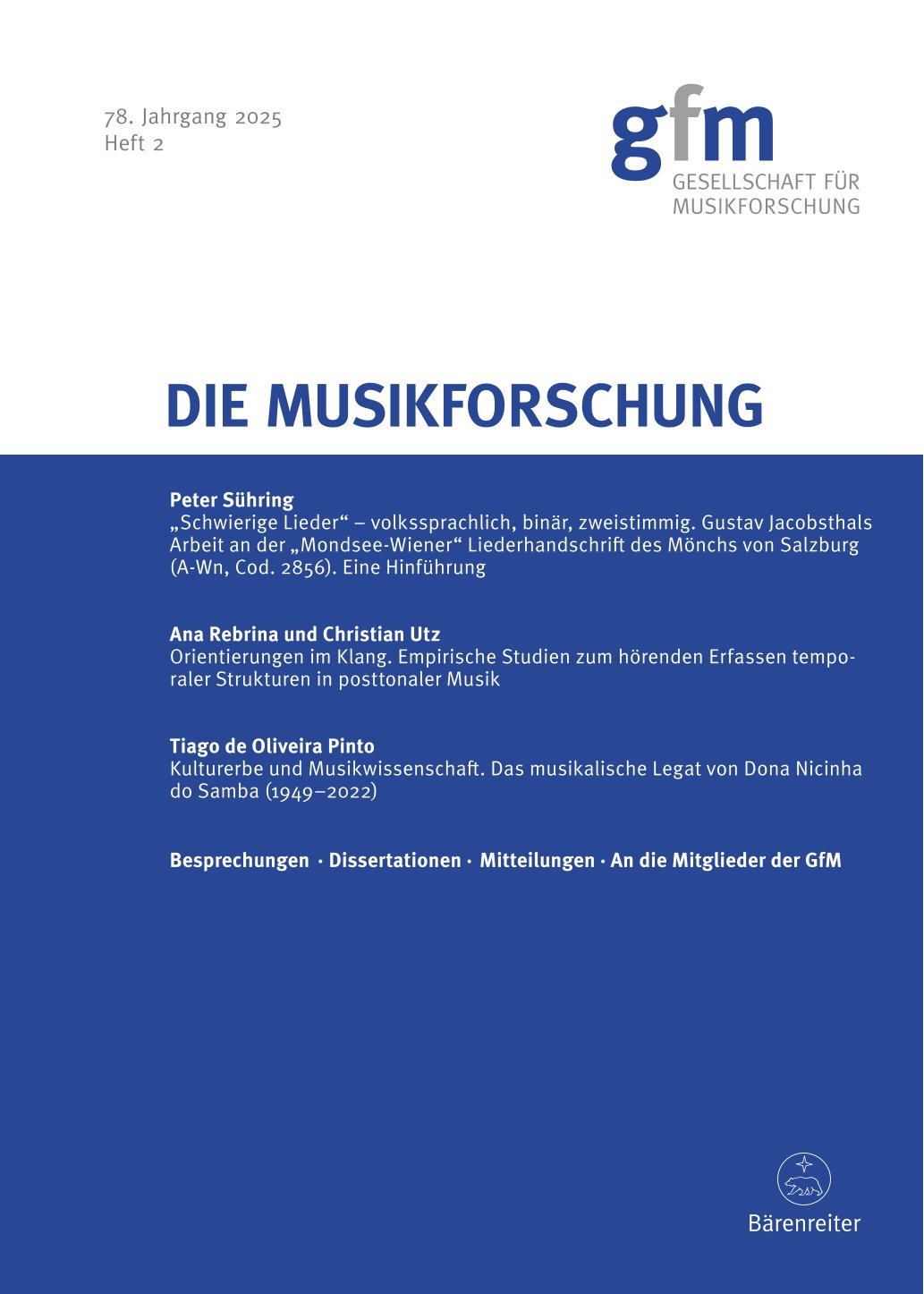Orientierungen im Klang
Empirische Studien zum hörenden Erfassen temporaler Strukturen in posttonaler Musik
DOI:
https://doi.org/10.52412/mf.2025.H2.5074Abstract
The Points of Discontinuity (PoD) research project explored temporal dimensions in listening strategies of post-tonal music. The study was guided by a morphosyntactic approach to musical perception and the hypothesis that performative, creative listening does not depend on a formal musical education, even in cases of highly complex musical structures. A large-scale listening experiment featured a total of 920 tasks: 23 instrumental and electronic works, composed between 1909 and 2010 in a variety of styles and genres, were annotated by 40 participants each, who were asked to define musical segments (with markers graded on a scale from 1–3) and to qualify points of segmentation with predefined descriptors and optional comments. This article provides an in-depth analysis of the results obtained for four pieces: the second of Igor Stravinskij’s Trois pièces pour quatuor à cordes (1914), Pierre Boulez’s Le Marteau sans maître (1952–1957, movement VII), Brian Ferneyhough’s Time and Motion Study I for solo bass clarinet (1971/1976–1977), and Kaija Saariaho’s Lichtbogen for nine musicians and live electronics (1985–1986). “Flat hierarchies”, resulting from the systematic use of interruptions and silences or seemingly endless continuities and transformations, lead to an increased ambivalence and diversity in the temporal location and understanding of listeners. Experts generally show a stronger tendency to incorporate macroformal dimensions, while non-experts seem to rely more on moment-to-moment tensional processes. However, the convergence of expert and non-expert results generally suggests highly individualized approaches to post-tonal temporality, providing evidence for the strong relevance of performative activity in concrete listening acts.






